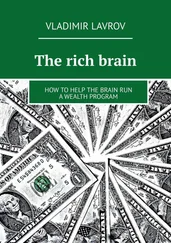Redemptive fear is the most terrifying. People are afraid of fear. One character in The Pilgrim is straying but unable to take the decision to turn to mindfulness. ‘I thought that directly I began to pray God would destroy me’ (187). Fear, or Heidegger’s ‘Angst’, will cripple, destroy, sweep away, only all the familiar, inessential links between body and mind, will cast the body back to the body, and return the mind to pure mind. 19
People remark on how few prayers there are in the Gospels. There seems to be a straightforward explanation for this. Perhaps, speaking of prayers strictly in the traditional sense, there is not a single one, but that is just how it should be: the Gospels are in their entirety a school of mindfulness, of unceasing prayer. I probably do not have to explain further that by that I mean real constant mindfulness and not, of course, repeating the same words a thousand times over. St Feofan the Recluse contemptuously styled such practitioners ‘whisperers’, muttering their prayers meaninglessly; and those who mechanically synchronized their breathing to the words he called wheezers who snuffled through their prayers. For him, these were both senseless external techniques. In The Pilgrim, too, the Gospel is primarily a school of prayer. ‘[The] Gospel bids unceasing prayer. To other acts of piety their own ties are assigned, but in the matter of prayer there are no off times. Without prayer it is impossible to do any good and without the Gospel you cannot learn properly about prayer’ (193).
Mindfulness interrupted ceases to be mindfulness. If prayer is not unceasing, it becomes something entirely different, a ritual.
For the Pilgrim the dark forest was initially frightening and oppressive, but he came to feel at home there and rejoiced in the wilderness: ‘The silent forest is like a Garden of Eden in which the delightful Tree of Life grows in the prayerful heart of the recluse’ (240). The silent forest is the familiar, Russian body of the Pilgrim. Just because it is so boldly, so completely itself, all that is remote from him becomes the Pilgrim’s own. (The dichotomy propounded by Lotman and Uspensky between what is one’s own and what is alien is simply wrong. 20It is based on a loose, conventional understanding of ownership. What is truly one’s own includes everything that is genuine.) The Russian forest merges with the Garden of Eden into a single Tree of Life, which is also the wood of the Cross.
Here we will only touch lightly on this theme, but moving on from The Pilgrim we will need to talk more precisely about the Russian forest.
Mountains, by which I mean high mountains rising above the tree line, pierce heights where, because the air is rarefied, one feels the coldness of space. The sun shines more brightly than down below but the thin air already has almost no mass, and there is no medium to conduct the heat from a blazing hot rock. If a short-sighted alien were to come close to the earth in a mountainous region devoid of forest, he would find the planet no different from a sterile asteroid. He would be unable to understand why there should be air and water lower down, and even more puzzling would be the meadows and forest. The earth might have been an asymmetrical lump of rock if wind, and water expanding in cracks when it froze, had not dragged the mountain peaks down to the plains. The soil settling there from mudslides became almost as smooth as the water that had brought it down. One could imagine that the rocks and mountains were thrown, sprayed at the earth from above, while its roundness resulted from slow erosion by wind and water. The earth may have been thoroughly angular, a hotchpotch of bits of the asteroids which bombarded it over billions of years. How did those bare bones come to be covered in organic tissue? That is an interesting question, but not one we are called upon to answer. The question for us is, could it be that, just as the thing closest to us, our body, almost never comes into our field of vision, so the same is true of the entity on which we exist. Our body is viewed from the outset – we are after all spiritual, conscious, intelligent beings – as a means of attaining ends: for example, by working. May the same not be true of the earth? We have only to frame the question in those terms for the answer to be obvious.
The summits of mountains are snowy, icy, or bare, as if the earth were still being buffeted by the solar wind. It is much the same at both poles. Then suddenly, below a height of four kilometres, the forest begins, it descends from there along with the streams, and would continue down into the valleys but for people. In regions levelled by water, half the forest has been cut down, or more than half, or all of it. Leonardo da Vinci was right: the mountains have been levelled by wind and water. It seemed to him there was something wrong about that: something must have happened to the earth and it seemed to be bleeding to death. The water, draining away, left plains.
Nowadays, great cities stand on those plains in which, thanks to their dwellings, electricity, mains water, and sewerage, a different metabolism has been created. A different luminary shines round the clock and there is a different habitat. Only, as it is so elegantly put, nowadays that habitat is in a state of ‘environmental disequilibrium’. In other words, the city cannot exist without further ploughing up of the soil around it, and further pollution of the soil, air, and water. A major city stands out on the plain like a rash of eczema or an allergy. The forest has been felled so that the plain can be ploughed up so that the city can be fed. In exchange, the city belches out chemicals, radiation, and gases. The mountains are being eroded and levelled to make way for the forest, while the forest makes way for people. As people proliferate, they cut their primal environment down and plough it up. The mismanagement is causing degradation of the soil. Just as the deserts of Arabia and North Africa were caused by protracted human ‘management’, so people nowadays are making a global desert for themselves. Neglect the ecology of the fields and you get a desert.
Using the level ground and the forests in this manner, there is clearly something people have not thought through. Proliferation of great cities has been a mistake, as their planners are themselves forced to admit. It seems that in this respect, too, there is no topic more important than the forest.
The number 2000 appeared only on the pages of newspapers and on screens. Looking down from the air, looking at the great cities spilling over the plains, the number appeared to herald nothing whatsoever. Unless perhaps a glimmer of hope that humans might wake up, at least partly, and open their eyes. What people love – old churches, castles in the mountains – shows that a different way of treating the earth is possible, but they appreciate these things aesthetically, and enjoy holidays in the countryside only then to return to their globalism. To encompass the world ‘globally’ seems now to be the aim of almost everything anybody does, but that focus does not mean any more attention is being paid to the earth itself. On the contrary, it is lost behind plans and screen images as never before. Globalism is a sick imitation of paying attention to the earth, just as the main aim of the comprehensive studying of ‘humankind’ is not to notice what the Pilgrim discovered when he decided to become mindful. He discovered the nature of his own breathing, of his heartbeat, of the way he ate. He noticed what he ate, and how he related to other bodies.
In globalization, a mindful attitude towards the earth is the last thing we can hope for. People are as blithely unaware of the nature of this living entity as they are of the animal that they are themselves, and they will pay no heed to it until it revolts. They regress back to the forest in their tobacco smoking, wine bibbing, and drug taking; the forest, so long dispossessed, thus cruelly avenges the injury directly in the big city centre.
Читать дальше












